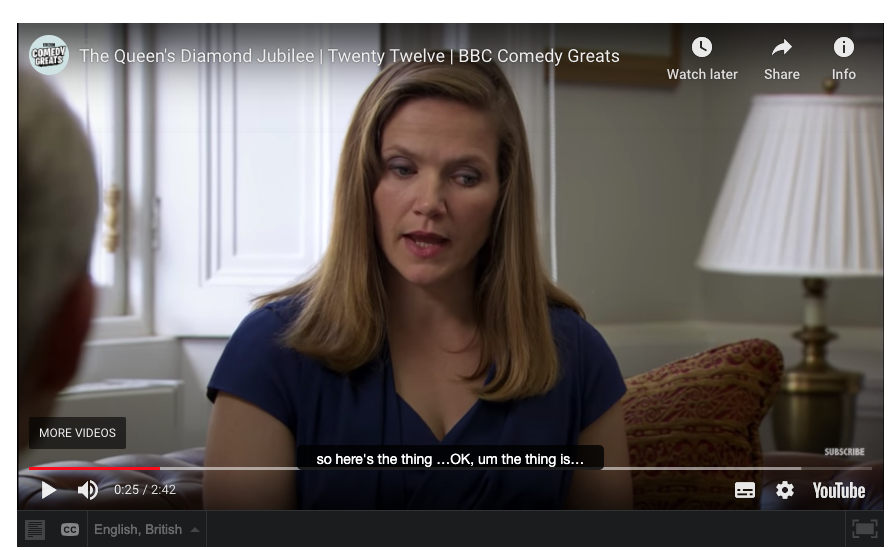In natural, spontaneous discourse many native speakers make use of discourse markers (such as now then, to begin with, if you ask me, truth be told…), which help speakers organise their speech. Besides those, there are words which are simply fillers: words/expressions which carry no actual content, no real meaning. However, they fulfil an essential communicative function: they buy the speaker some extra time to think about what they’re going to say next while keeping the conversation going and keeping the floor (turn to speak).
The most frequently-used fillers include you know, I mean, or like, which is typically used by younger speakers. In formal, polite speech it is not appropriate to overuse them. However, it is fair to say that a sensible use of these fillers can help you sound more natural, as well as allow you some extra time to come up with your next idea.
If you want to listen to native speakers using these fillers sensibly and reasonably, you can start by listening to this extract from the Desert Island Discs interview with the late singer George Michael, where both the interviewer and the singer use fillers such as “you know”, “you see” and “I mean” in a very natural way.
Watch on Vimeo– click on the “CC” icon to turn on the subtitles
Singer Adele tends to be quite friendly and chatty when giving interviews, which results in her using plenty of these fillers, whether she is talking to James Corden (a close personal friend of hers) on Carpool Karaoke, or to the host on Desert Island Discs:
Watch on YouTube (subtitles available)
*Adele has recently been claimed to exemplify one of the emerging accents of British English, Estuary English. More information on this can be found here.
Many times, speakers may use these fillers when they are in an uncomfortable situation and they are finding it hard to find the right words. In this clip from the hit TV show Friends both Rachel and Ross are struggling to find the right words, as this is an uncomfortable conversation- hence their use of fillers:
You can also listen to this caller, who phoned BBC Radio London to express his views about young people nowadays:
Finally, you can also listen to this BBC reporter who is somehow uncomfortable talking about a sensitive subject and is trying to find the right words. (Only days before, a white teenager had been stabbed to death, apparently for no reason at all. There had been complaints about the media coverage of the crime, as people pointed out that there had been many such murders of teenagers before, but because they were not white, they hadn’t received the same treatment in the media). As you will notice, he overuses the expression ‘you know’, as he looks for a politically correct way of expressing the situation.
However, some speakers may have a tendency to overuse fillers, regardless of the situation. As mentioned earlier, some younger speakers tend to overuse “like” as a filler. In this appearance on a talk show, artist Stormzy explains his working relationship with street artist Banksy. While he uses some sophisticated language at times (bestowed upon me, world-renowned), he is also very hesitant and uses “like” too many times, which makes his story more difficult to follow, however appealing it might be. Interestingly enough, Stormzy has been recently chosen as the ultimate representative of one of the three new accents that have emerged in British English.
Watch on YouTube– subtitles available
Similarly, if you watch this interview with Victoria Beckham (subtitles available), you will notice that she starts overusing these fillers, (maybe she is actually struggling to think of what to say, or perhaps the former “Posh Spice” is just being herself). [originally seen on http://mythatsenglish.blogspot.com.es/2011/01/victoria-beckham-proud-to-be-british.html]
Siobhan Sharpe, one of the main characters in BBC’s mockumentary comedy shows Twenty Twelve and W1A makes extensive use (and appalling overuse) of fillers such as here’s the thing/the thing is, OK, and cool. (In fact, this overuse, especially when she gets stuck for words, is one of the trademark features which make her so funny). Siobhan is, actually, the quintessential example of what should NOT be done in an interaction: she does not listen to her partners, she constantly interrupts them and fails to take the floor when she is given the right to speak as she is busy texting.


How do native speakers feel about these fillers?
- The ‘Kind of, Sort of’ Era
- Why we use discourse markers and filler words like ‘um’, ‘like’, ‘you know’ and ‘er’.
Finally, in these videos you can find examples of how to use some of the discourse markers above:
More about speaking tests:
- https://natalialzam.wordpress.com/2015/02/25/expressions-to-use-in-a-speaking-test-monologue-interaction/
- https://natalialzam.wordpress.com/2015/02/05/como-preparar-un-examen-oral-ingles/
(Updated 27.12.2023)


Thank you! Have been using your articles and resources with my C2s’ and have been most helpful!
LikeLike
Thank you for your comment. I’m glad you found something useful for your students here.
Regards,
Natalia
LikeLike